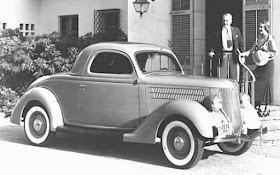Neons were a prime example of "badge engineering" whereby an automobile is marketed under two (or more) brand names with minimal differences. In the Neon's case, those brands were Plymouth and Dodge in the USA, and overseas Neons were sold as Chryslers. Basic first-generation Plymouth and Dodge Neons differed externally mostly via brand badges, though they also might have had different hub caps and other minor non- brand related items here and there.
Styling was of its time, featuring increased aerodynamic refinement compared to boxy Chrysler Corporation K cars that were marketed from the early 1980s into the 1995 model year. Passenger compartment greenhouses were large and the rest of the bodies were comparatively short, features also in line with styling fashion in those days. Ornamentation was minimal, this too a current practice.
The detail that made Neons seem "cute" and helped their marketplace success was the shape of their headlights and the smile-like effect of the lower air intake. The story goes that Chrysler bean-counters objected to the headlight design on the basis of cost, wanting cheaper round ones. This would have made Neons less distinctive and probably would have lessened sales. Fortunately, the financial folks were overruled and Neons sold well, especially during the first model years.
The images below have captions based on what I found on the Internet: in many cases it's hard to tell if a Neon is a Plymouth or a Dodge when looking at a small photo. Even the model years posted are problematical, though the Plymouth brand was dropped during 2001, so all USA Neons thereafter were Dodges.
This is said to be a 1996 Plymouth Neon ...
... and this a 1996 Dodge Neon. Two-door Neons such as this were produced only during the first generation.
1998 Dodge Neon showing rear-end styling. First-generation Neons' front and rear bumpers and side trim had rub-strips at the same level, helping to integrate the design.
2001 Dodge Neon. The general effect is quite similar to that of the first-generation design despite many detail differences. The set of rub-strips mentioned in the previous caption is gone so far as bumper relationships are concerned. The side strip has been joined by a character line above the door handles. Headlights are a slightly different shape, but retain the "cute" theme of those on earlier Neons.
Rear 3/4 view of a 2003 Neon. Different from before, but not seriously different.
Dodge Neon from late in the production run. Its grille has been facelifted to incorporate Dodge's cross or "gunsight" theme that remains in place today.




















































